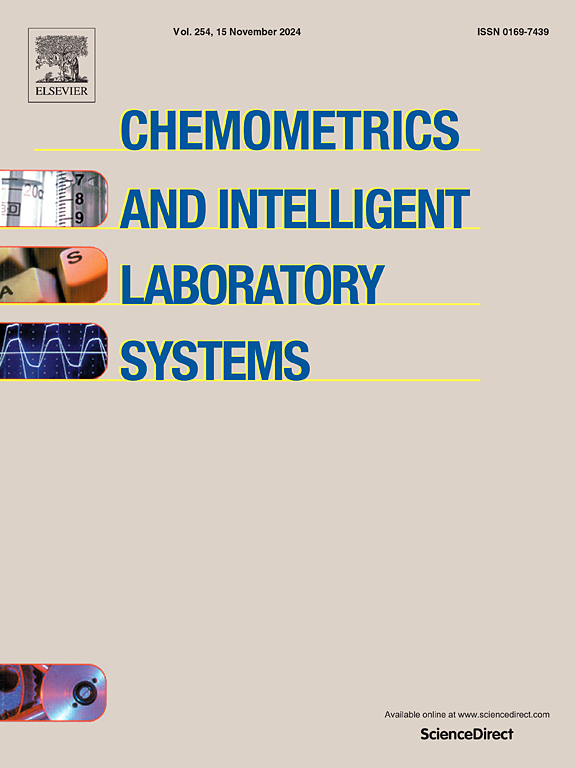Improvement of hyperspectral imaging signal quality using filtering technique
IF 3.7
2区 化学
Q2 AUTOMATION & CONTROL SYSTEMS
Chemometrics and Intelligent Laboratory Systems
Pub Date : 2025-03-19
DOI:10.1016/j.chemolab.2025.105386
引用次数: 0
Abstract
This paper proposes to improve signal quality in hyperspectral imaging (HSI) on the basis of noise analysis and filtering method. HSI technology enables nondestructive and precise analysis in agriculture and food industries by acquiring high-resolution images over multiple wavelengths, but the identification and removal of noise in the signal is a challenge. In this study, HSI measurement data of sucrose solution samples of different concentrations were used as experimental subjects. The outliers outside the three-fold standard deviation range of all data were identified as noise and a filtering method using noise mask and Wavelet transform was proposed. By evaluating the effect of the filtering method on noise reduction, we conducted qualitative and quantitative analysis and comparison, mainly through statistical methods and the limits of detection (LOD), LODmin and LODmax. The experiment results show that the proposed method is useful in removing noise, reducing the detection limit when applying Partial Least Squares (PLS) and improving the HSI signal quality. This is expected to improve the accuracy of nondestructive analysis using HSI data.
求助全文
约1分钟内获得全文
求助全文
来源期刊
CiteScore
7.50
自引率
7.70%
发文量
169
审稿时长
3.4 months
期刊介绍:
Chemometrics and Intelligent Laboratory Systems publishes original research papers, short communications, reviews, tutorials and Original Software Publications reporting on development of novel statistical, mathematical, or computer techniques in Chemistry and related disciplines.
Chemometrics is the chemical discipline that uses mathematical and statistical methods to design or select optimal procedures and experiments, and to provide maximum chemical information by analysing chemical data.
The journal deals with the following topics:
1) Development of new statistical, mathematical and chemometrical methods for Chemistry and related fields (Environmental Chemistry, Biochemistry, Toxicology, System Biology, -Omics, etc.)
2) Novel applications of chemometrics to all branches of Chemistry and related fields (typical domains of interest are: process data analysis, experimental design, data mining, signal processing, supervised modelling, decision making, robust statistics, mixture analysis, multivariate calibration etc.) Routine applications of established chemometrical techniques will not be considered.
3) Development of new software that provides novel tools or truly advances the use of chemometrical methods.
4) Well characterized data sets to test performance for the new methods and software.
The journal complies with International Committee of Medical Journal Editors'' Uniform requirements for manuscripts.

 求助内容:
求助内容: 应助结果提醒方式:
应助结果提醒方式:


